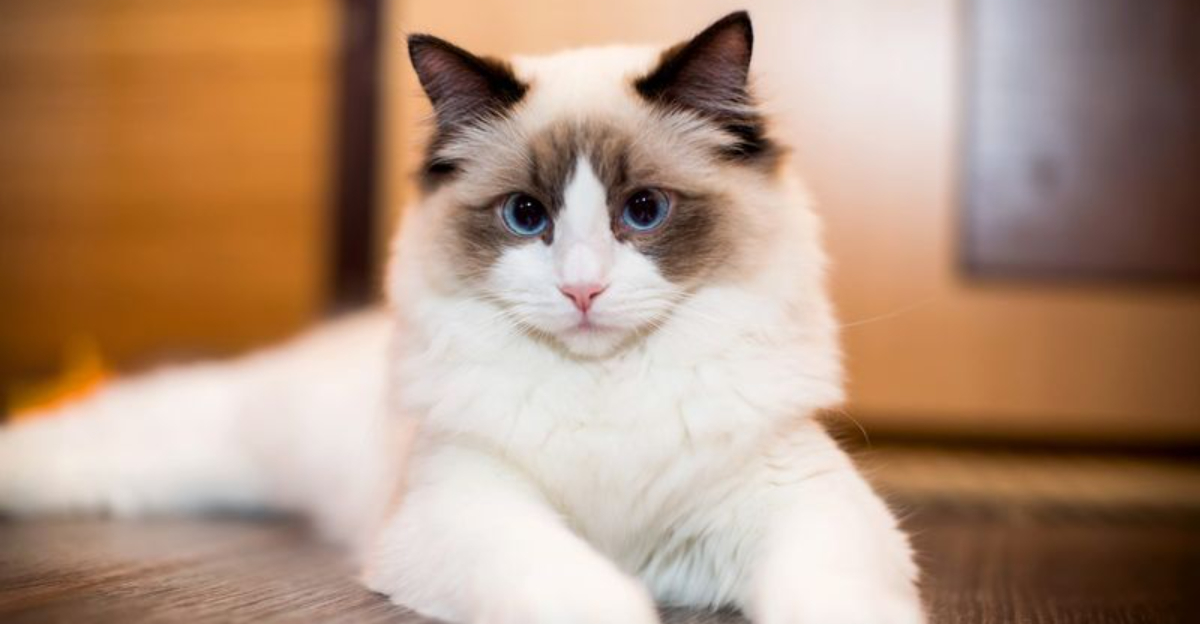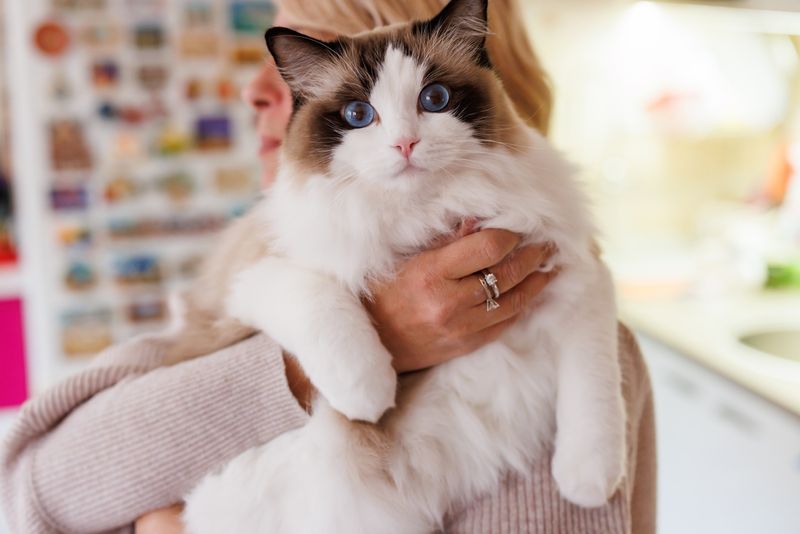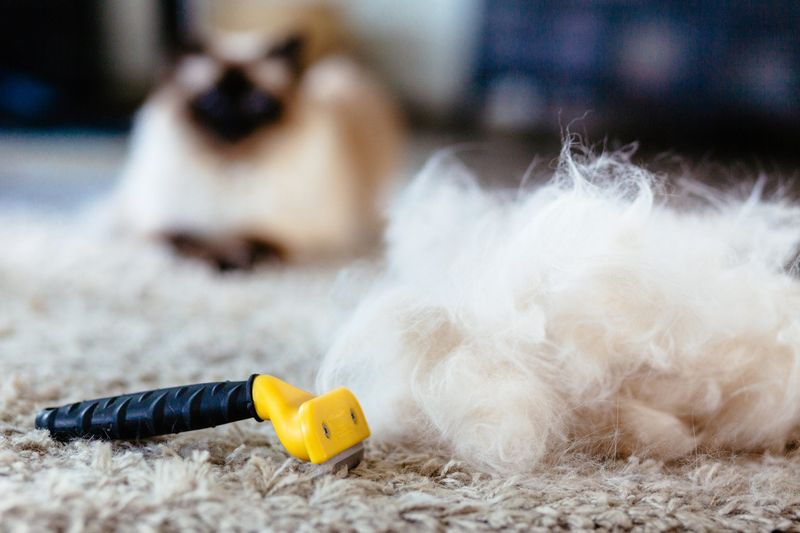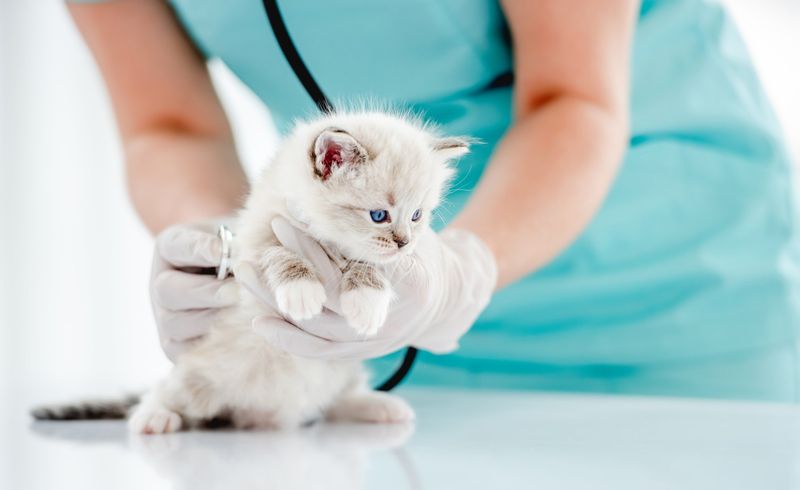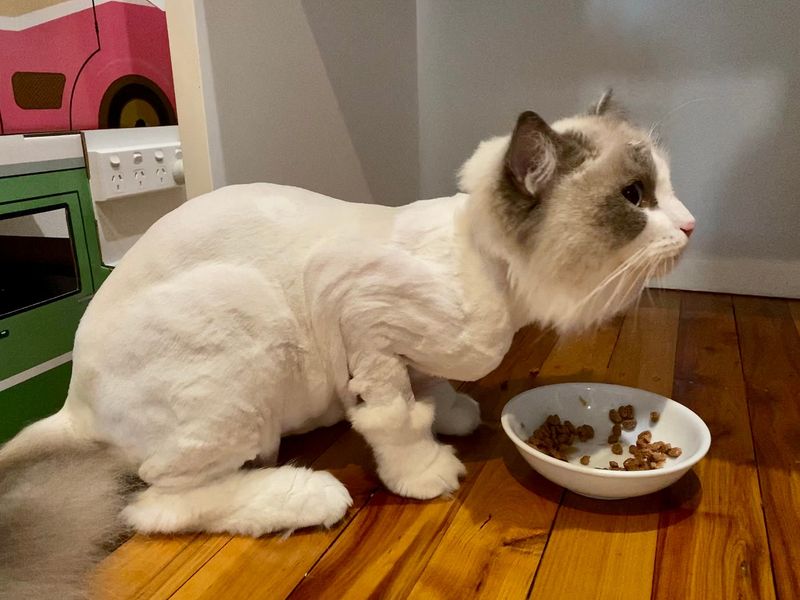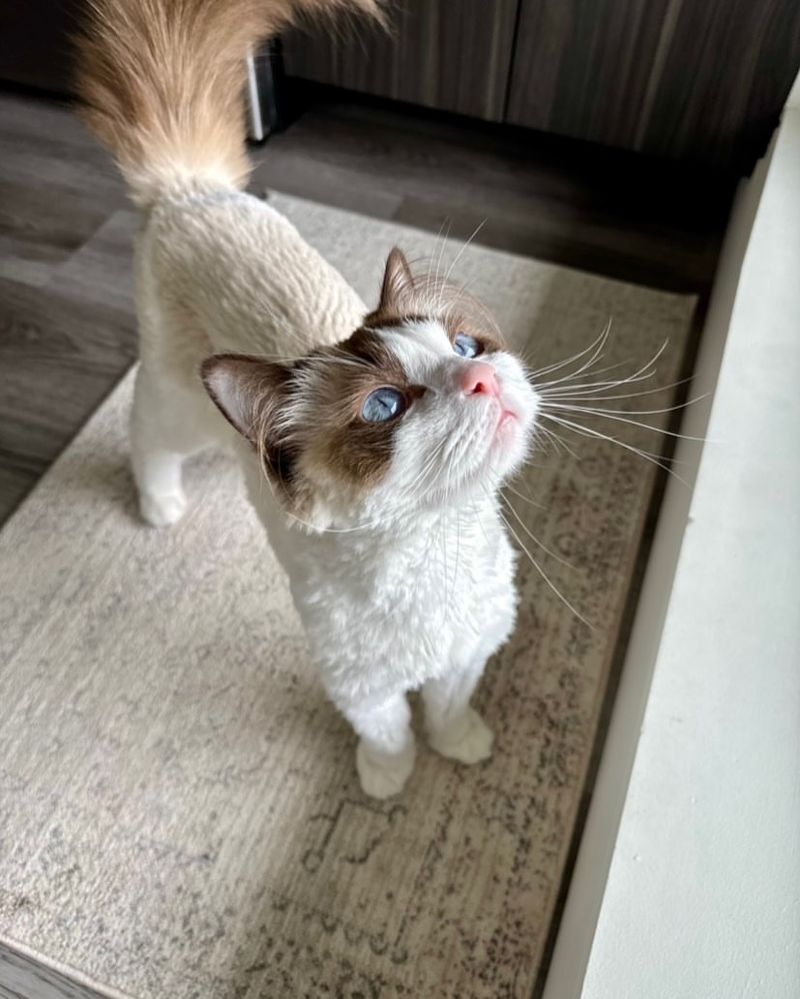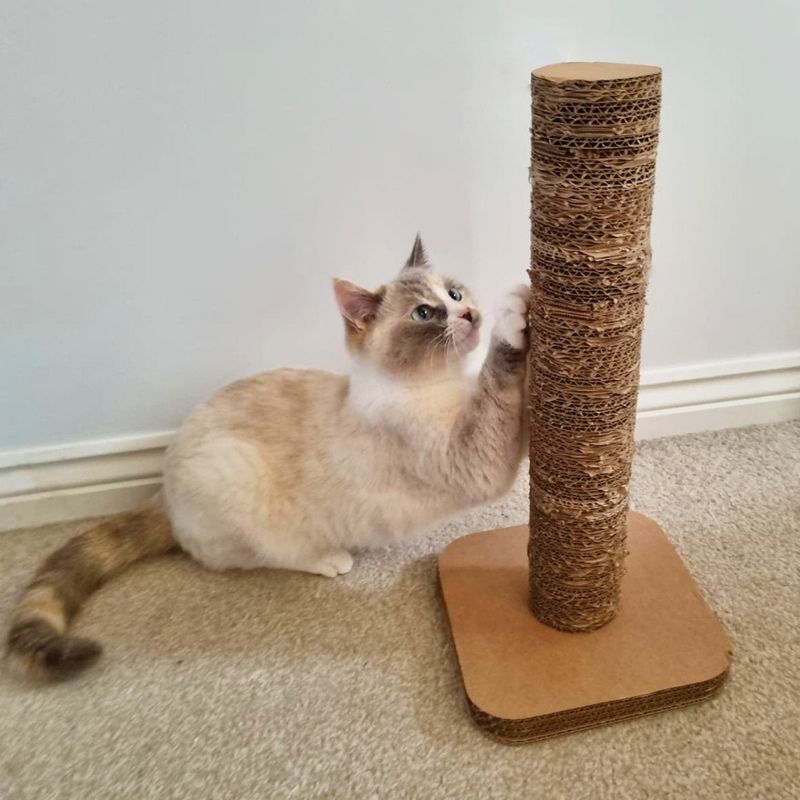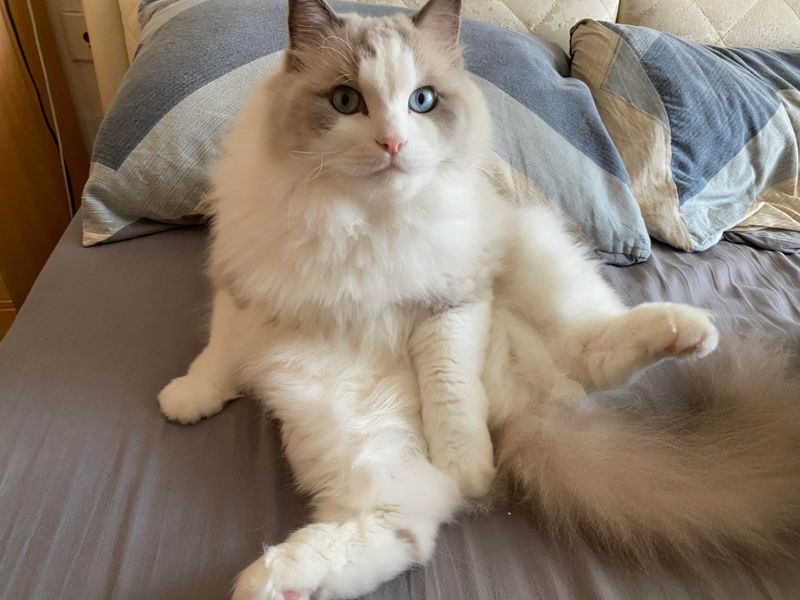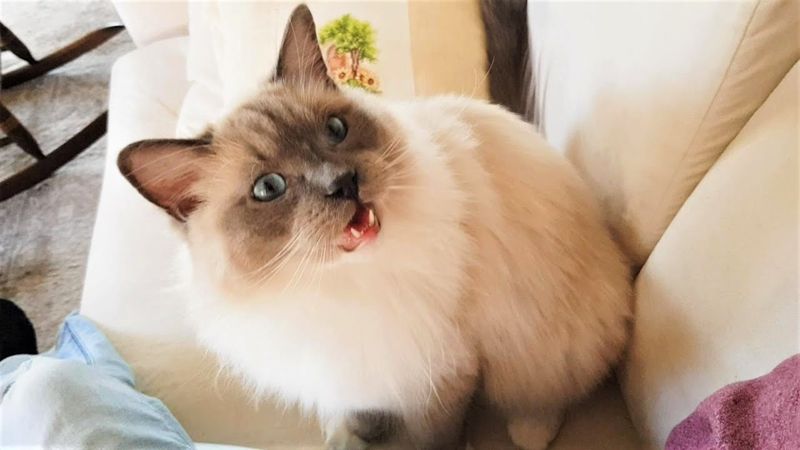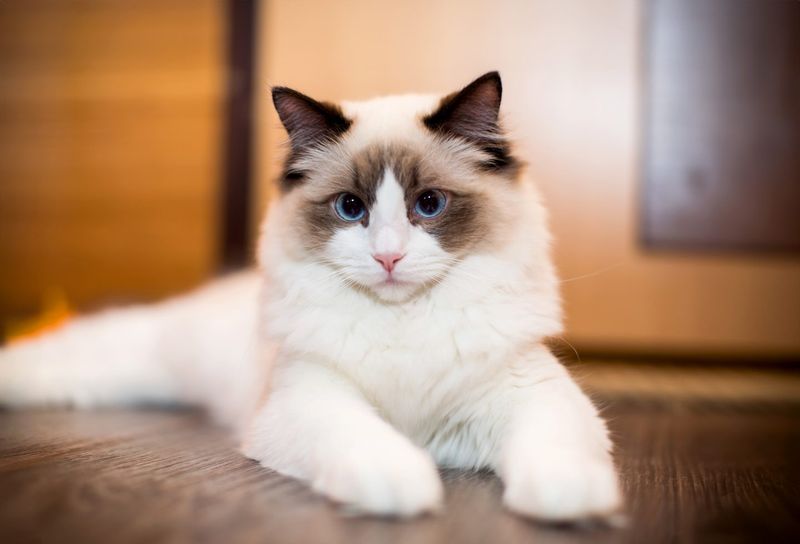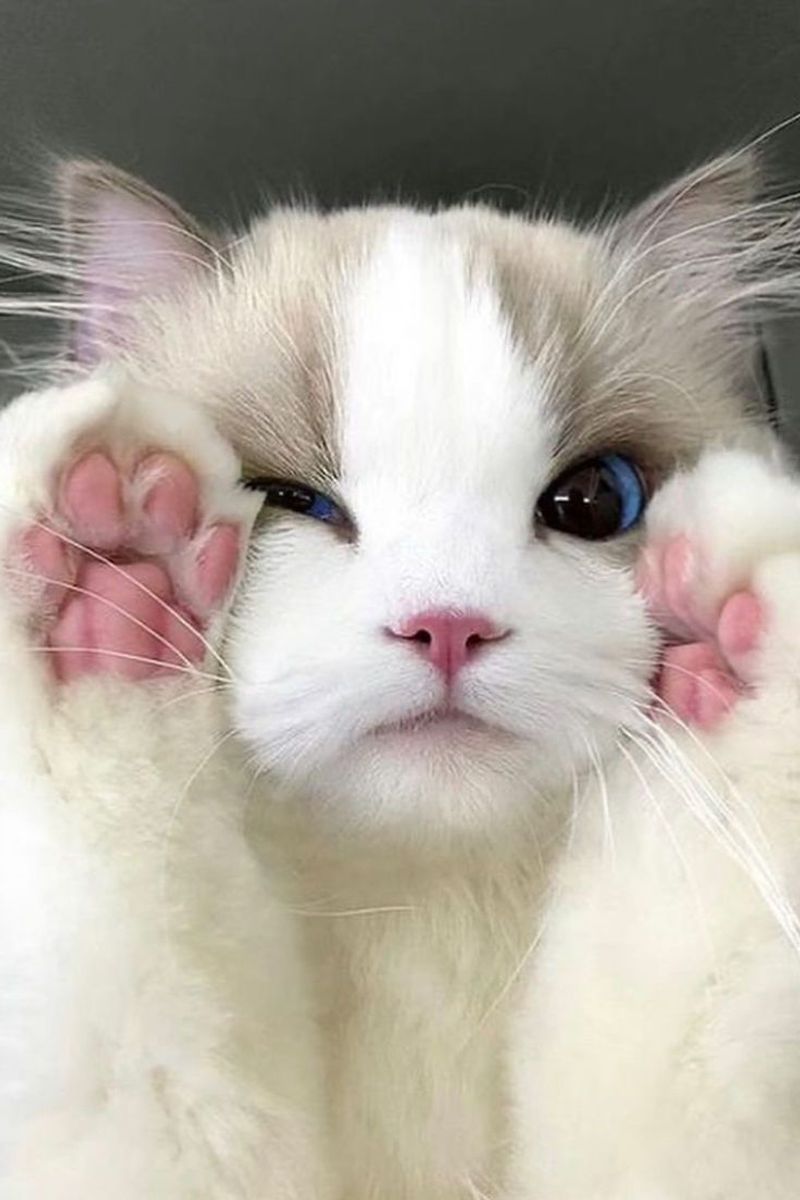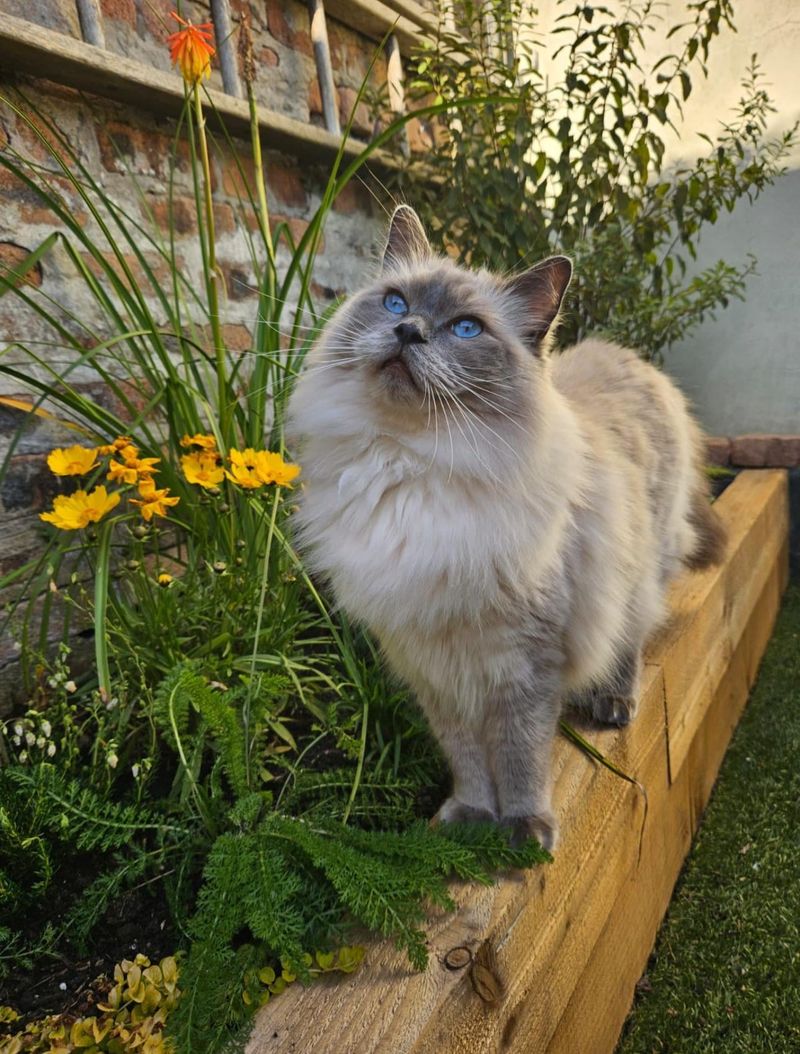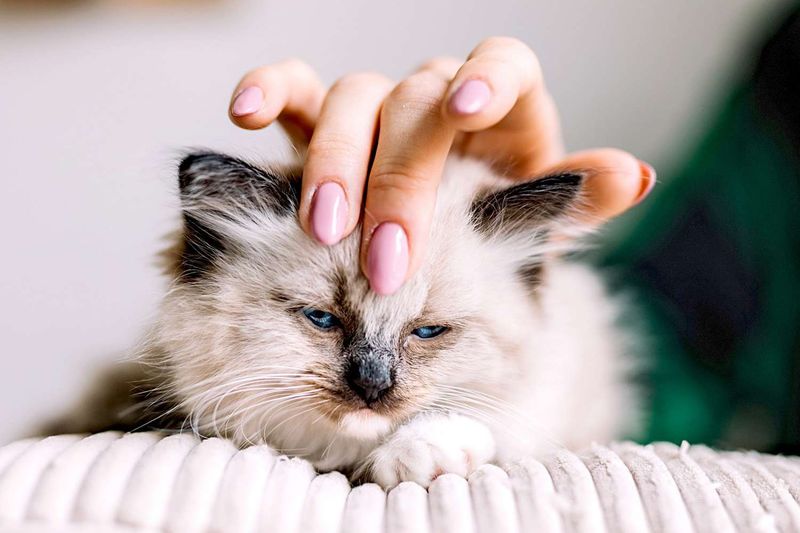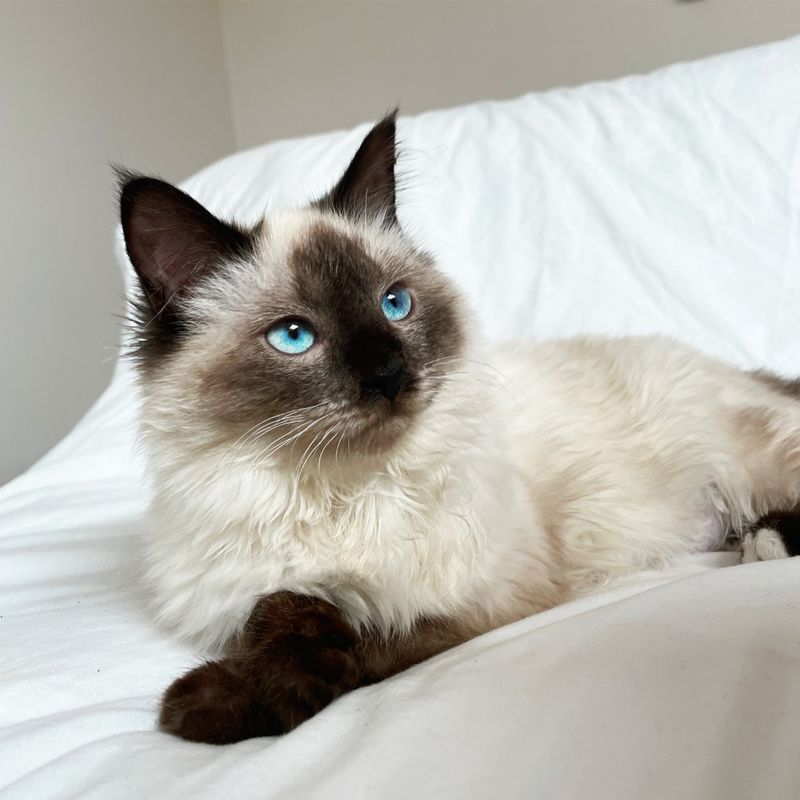📖 Table of Content:
- 1. High Maintenance Grooming
- 2. Heavy Shedding
- 3. Expensive Vet Bills
- 4. Sensitive Stomachs
- 5. Need for Attention
- 6. Destructive Scratching
- 7. Challenging to Train
- 8. Potential Allergies
- 9. Prone to Obesity
- 10. Vocal and Demanding
- 11. Long Adjustment Period
- 12. Health Prone Issues
- 13. Limited Outdoor Time
- 14. Separation Anxiety
- 15. Cost of Ownership
Ragdoll cats are often admired for their stunning blue eyes and luxurious fur, but their beauty comes with some hidden difficulties. Despite their affectionate and calm demeanor, several challenges come with owning a Ragdoll cat. It’s important to understand these aspects before deciding to bring one of these felines into a home.
Though they are known for their loving nature, Ragdolls can present unexpected issues, ranging from health problems to behavioral quirks. Their size and gentle temperament can sometimes mask underlying concerns that need attention. Understanding these nuances is crucial for anyone thinking of adopting this breed.
Owning a Ragdoll is not always as easy as it seems. The breed requires attention and care that may catch new owners off guard. This guide will highlight 15 essential things to consider, offering a balanced view of Ragdoll ownership, including practical solutions for dealing with potential challenges.
1. High Maintenance Grooming
The beautiful coat of a Ragdoll requires consistent grooming to stay in top condition. Mats and tangles can form if regular brushing is neglected. A grooming routine should be established from a young age to acclimate your cat.
Invest in quality grooming tools like a slicker brush and detangler. Grooming sessions can be bonding time if approached calmly. However, grooming isn’t just about aesthetics—neglect can lead to skin issues. You’ll need to dedicate time each week for grooming. This commitment ensures your Ragdoll remains comfortable and their coat remains beautiful.
2. Heavy Shedding
Ragdoll cats are notorious for their heavy shedding. If you’re not prepared for it, your home can quickly become covered in fur. Investing in a good vacuum and grooming tools is essential. Regular brushing can minimize shedding, but you’ll still find fur in unexpected places. It’s important to groom your Ragdoll weekly to prevent mats and tangles.
Beyond aesthetics, shedding can affect allergies. If you or your family members are sensitive, this may pose a problem. Consider allergy-friendly cleaning products. It’s manageable with effort, but be prepared for fur to be a constant companion in your home.
3. Expensive Vet Bills
Due to their genetics, Ragdolls are more likely to develop certain health issues, leading to potentially expensive vet care. Hypertrophic cardiomyopathy is a common condition that needs ongoing monitoring. Scheduling regular veterinary visits is key to keeping them healthy.
It’s wise to budget for unexpected medical expenses or consider pet insurance. Vet visits can be frequent and costly, so financial planning is important. Being proactive about your cat’s health can prevent more severe issues down the line. Understanding the potential costs involved is essential before bringing a Ragdoll into your life. The peace of mind that comes with preparedness is invaluable.
4. Sensitive Stomachs
Due to their delicate digestive systems, Ragdolls can experience stomach problems easily. Selecting the appropriate food for their needs is vital to avoid discomfort. Sudden shifts in diet often result in unpleasant symptoms like vomiting or diarrhea.
Introduce new foods gradually and monitor for any adverse reactions. Consider consulting your vet for dietary recommendations. This sensitivity requires vigilance and can be challenging to navigate. Patience is key, as finding the right diet can take time. Once established, sticking to a consistent feeding routine helps maintain digestive health. Your Ragdoll’s overall well-being is closely tied to their diet.
5. Need for Attention
Known for their sociable nature, Ragdolls require a lot of attention from their owners. Their need for affection can be intense and demanding. Expect them to follow you everywhere, always looking for cuddles and companionship.
If left alone for extended periods, they may develop separation anxiety. This means they’re not ideal for busy individuals. Incorporating them into daily activities can help satisfy their social needs. Consider this aspect if you’re often away from home. Providing toys or another feline companion can help alleviate loneliness. Meeting their emotional needs ensures a happy and well-adjusted Ragdoll. Neglecting this can lead to behavioral issues.
6. Destructive Scratching
Ragdolls love to scratch, which can be destructive if not properly managed. Providing scratching posts is essential to protect your furniture. Training them to use these posts from a young age is key.
Use positive reinforcement when they use appropriate scratching surfaces. Cats typically scratch to mark territory and exercise muscles. Without proper outlets, your home furnishings may suffer. Regular nail trimming can also help minimize damage. Implementing these strategies requires patience but helps maintain harmony in your household. A well-placed scratching post can save your couch from becoming a casualty.
7. Challenging to Train
While Ragdolls are quite intelligent, their tendency to be stubborn can make training a bit of a struggle. They respond best to positive reinforcement and gentle encouragement. It’s important to be patient and consistent, as they may take time to catch on.
Short, engaging training sessions are more effective than long ones. Ragdolls can learn tricks and commands, but it takes time and effort. Training helps stimulate their minds, preventing boredom-related behaviors. It’s important to find what motivates your cat, whether it’s treats or affection. While they might not fetch your slippers, they can learn to sit or come when called with proper guidance.
8. Potential Allergies
While no cat is truly hypoallergenic, Ragdolls can trigger allergies in sensitive individuals. Their long coats can trap allergens like dander. Regular grooming and cleaning can help minimize reactions.
Use air purifiers and hypoallergenic covers on furniture. Visitors with allergies may also experience discomfort. It’s important to consider this if you have frequent guests. Allergy sufferers should spend time with Ragdolls before committing to ensure compatibility. Managing allergies involves diligence but can be achieved with proper care. Understanding this challenge is crucial for a harmonious living environment with your Ragdoll.
9. Prone to Obesity
Ragdolls have a tendency to gain weight easily. Their laid-back nature means they often prefer lounging over playing, leading to obesity. A proper diet and regular exercise are crucial. Choose high-quality cat food and monitor portions to prevent overfeeding.
Engaging your Ragdoll in play can be a challenge, but interactive toys can help. Obesity can lead to serious health issues like diabetes, so it’s important to keep your Ragdoll active. Regular vet check-ups are essential to monitor their weight and overall health. Maintaining a healthy weight requires diligence and commitment from the owner.
10. Vocal and Demanding
If you’re not a fan of meowing, a Ragdoll might not be the quiet companion you’re looking for. These cats are known to express their needs loudly and often, whether it’s hunger or a need for affection.
Understanding their vocalizations helps address their needs promptly. Some owners find this endearing, while others may find it overwhelming. Training can help mitigate excessive meowing, but patience is required. Providing mental stimulation through toys can also reduce vocal demands. Accept this trait as part of their personality. A well-understood Ragdoll is a content Ragdoll, and recognizing their vocal cues helps foster a positive relationship.
11. Long Adjustment Period
Ragdolls may take longer to adjust to new environments compared to other breeds. Patience and a gentle approach are necessary. Allow them to explore at their own pace to avoid stress.
Setting up a quiet, safe space for them initially can ease the transition. Gradual introductions to other pets or family members are beneficial. Ragdolls thrive in stable environments, so minimizing changes can help. Be prepared for this adjustment phase when bringing them home. With time and care, they’ll become comfortable and confident in their new surroundings. Their eventual affection makes the wait worthwhile.
12. Health Prone Issues
Beyond common feline ailments, Ragdolls are prone to specific health conditions. Regular vet check-ups are vital for early detection and management. Hypertrophic cardiomyopathy is one such concern.
Being informed about potential health risks allows for better preparedness. Discuss breed-specific concerns with your vet. Maintaining a healthy diet and active lifestyle can mitigate some risks. While not all Ragdolls will face health issues, awareness is key. Proactive care ensures a longer, healthier life for your feline friend. Investing in their health pays dividends in companionship and well-being.
13. Limited Outdoor Time
While being indoor cats protects Ragdolls from potential dangers like traffic or predators, it can also cause them to feel confined. Without enough stimulation or variety in their environment, they can quickly become bored.
Creating a stimulating indoor environment is crucial. Cat trees, toys, and interactive play can keep them engaged. Supervised outdoor time in a secure area can also be beneficial. Consider harness training for safe outdoor adventures. Balancing safety and enrichment is the goal. Indoor life doesn’t have to be dull with the right tools and activities. Happy Ragdolls lead to happy homes.
14. Separation Anxiety
Due to their affectionate nature, Ragdolls can become very attached to their owners, leading to separation anxiety. When left by themselves, they may display unwanted behaviors, including excessive meowing or destruction around the house.
Providing comfort items like a blanket with your scent can help. Gradually getting them used to short absences can also ease anxiety. Consider hiring a pet sitter or using automatic feeders for longer periods. Consistency in routine reassures them of your return. Managing separation anxiety requires understanding and patience. With the right approach, your Ragdoll can feel secure even when you’re not there. Their trust is worth the effort.
15. Cost of Ownership
Owning a Ragdoll comes with significant costs. From premium food and grooming supplies to regular vet visits, expenses can add up. The initial purchase price for a Ragdoll can also be high.
Budgeting for these costs is essential to avoid financial strain. Consider long-term commitments, including potential health issues. While their beauty and companionship are rewarding, they require investment. Evaluate your financial readiness before committing. Responsible ownership means providing the best care possible. Understanding the financial aspect ensures a happy life for both you and your Ragdoll. Preparedness leads to a harmonious relationship.
